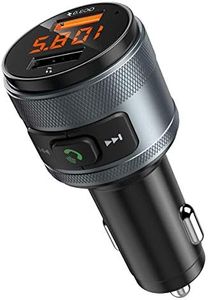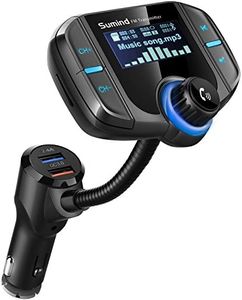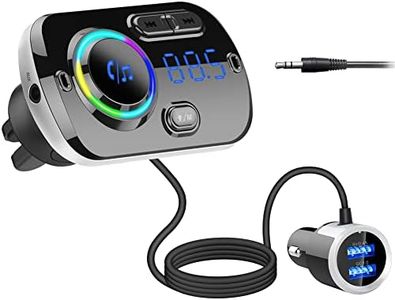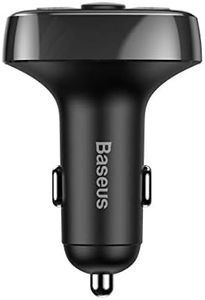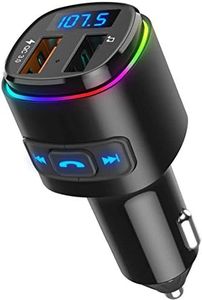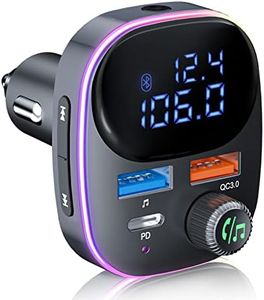We Use CookiesWe use cookies to enhance the security, performance,
functionality and for analytical and promotional activities. By continuing to browse this site you
are agreeing to our privacy policy
8 Best Car Fm Transmitters
From leading brands and best sellers available on the web.By clicking on a link to a third party's website, log data is shared with that third party.
Buying Guide for the Best Car Fm Transmitters
Choosing the right car FM transmitter can greatly improve your in-car audio experience, especially if your vehicle lacks modern connectivity features. An FM transmitter allows you to play music or take calls from your smartphone through your car's radio system. When shopping for an FM transmitter, it's essential to focus on several key specs that determine compatibility, sound quality, and overall convenience. Understanding these features will help you find a transmitter that fits your needs and enhances your drive.Bluetooth VersionThe Bluetooth version tells you which generation of Bluetooth technology the transmitter uses to connect to your phone or other devices. Newer Bluetooth versions generally mean better audio quality, stronger connections, and improved energy efficiency. Common versions you’ll see include Bluetooth 4.2, 5.0, and sometimes higher. If you want stable and clear audio, especially for streaming music or calls, look for transmitters with at least Bluetooth 4.2 or newer. Older phones may work with any version, but newer devices pair best with the latest Bluetooth.
Frequency RangeThe frequency range refers to the FM radio stations that the transmitter can broadcast to your car radio. A broader range makes it easier to find a clear station with minimal interference, especially in areas with many radio stations. Some transmitters offer only the basic FM range (usually around 88.1–107.9 MHz), while others allow for more precise tuning. If you drive in cities with crowded airwaves, a transmitter with a wide and adjustable frequency range will help you avoid static and keep your music clear.
Audio Input OptionsAudio input options describe how you can connect devices to the transmitter, such as via Bluetooth, USB, microSD card, or even an AUX cable. More input options mean more flexibility. If you mainly use your phone, Bluetooth is most convenient, but if you like to play music directly from a USB stick or memory card, make sure your transmitter supports those formats. Think about your favorite way to listen to music or podcasts – that should guide which inputs are most important for your use.
Charging CapabilitiesMany car FM transmitters also double as phone chargers, featuring USB or USB-C charging ports built in. Charging specs are important if you want to keep your device powered on the go without extra adapters. Some transmitters offer basic charging (around 1A), while others support fast charging standards, allowing quicker battery fill-ups. Consider what devices you plan to charge and how quickly you need them to recharge when picking the transmitter.
Hands-free Calling FeaturesHands-free calling means you can answer calls safely without touching your phone, using a built-in microphone and speaker through your car's audio system. Look for transmitters that feature noise cancellation and echo reduction, as these improve call clarity. If you often use your phone for calls while driving, prioritize good hands-free functionality, as it improves both safety and convenience.
Display and ControlsThe display shows frequency, song info, and sometimes caller ID, while the controls help you adjust frequency, skip tracks, answer calls, or change volume. Larger, well-lit displays and easily accessible buttons or knobs make it safer and easier to operate the transmitter without being distracted from driving. If you value straightforward operation, choose a unit with a clear screen and intuitive controls.
